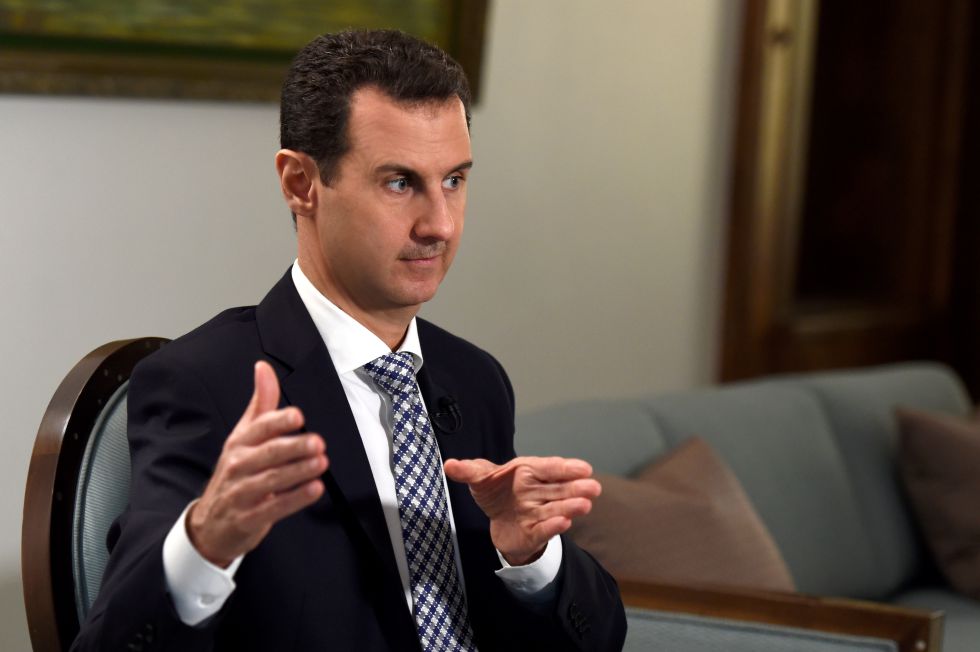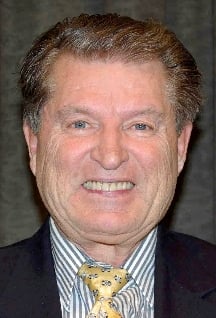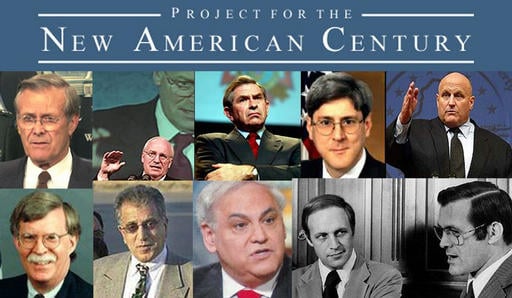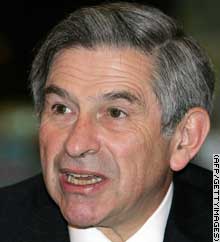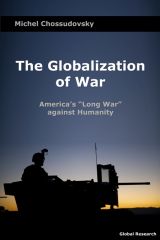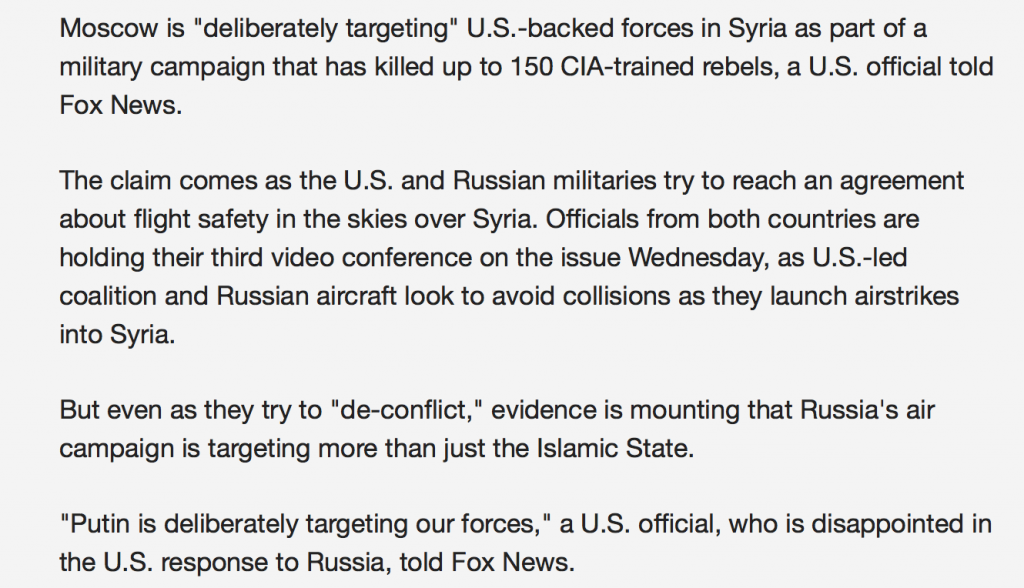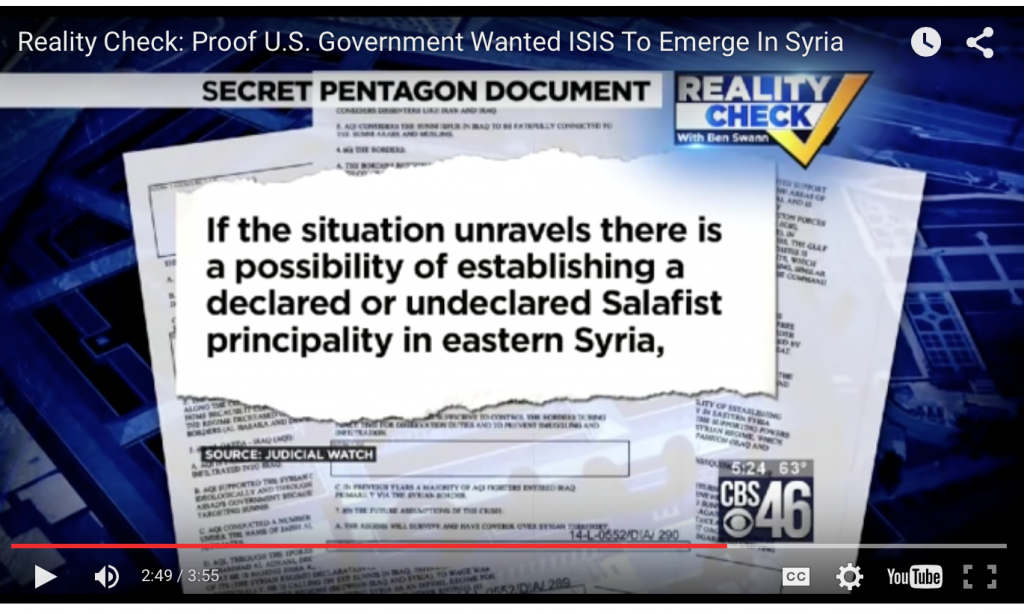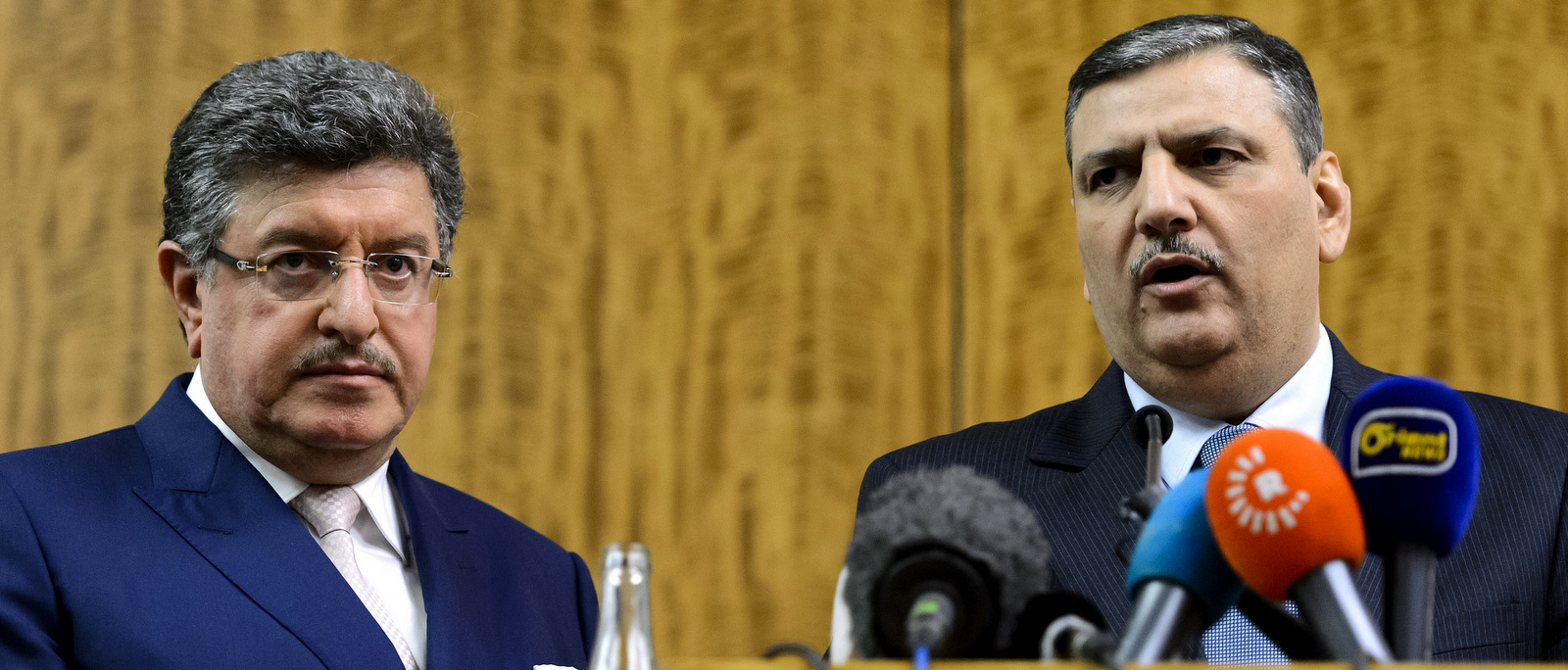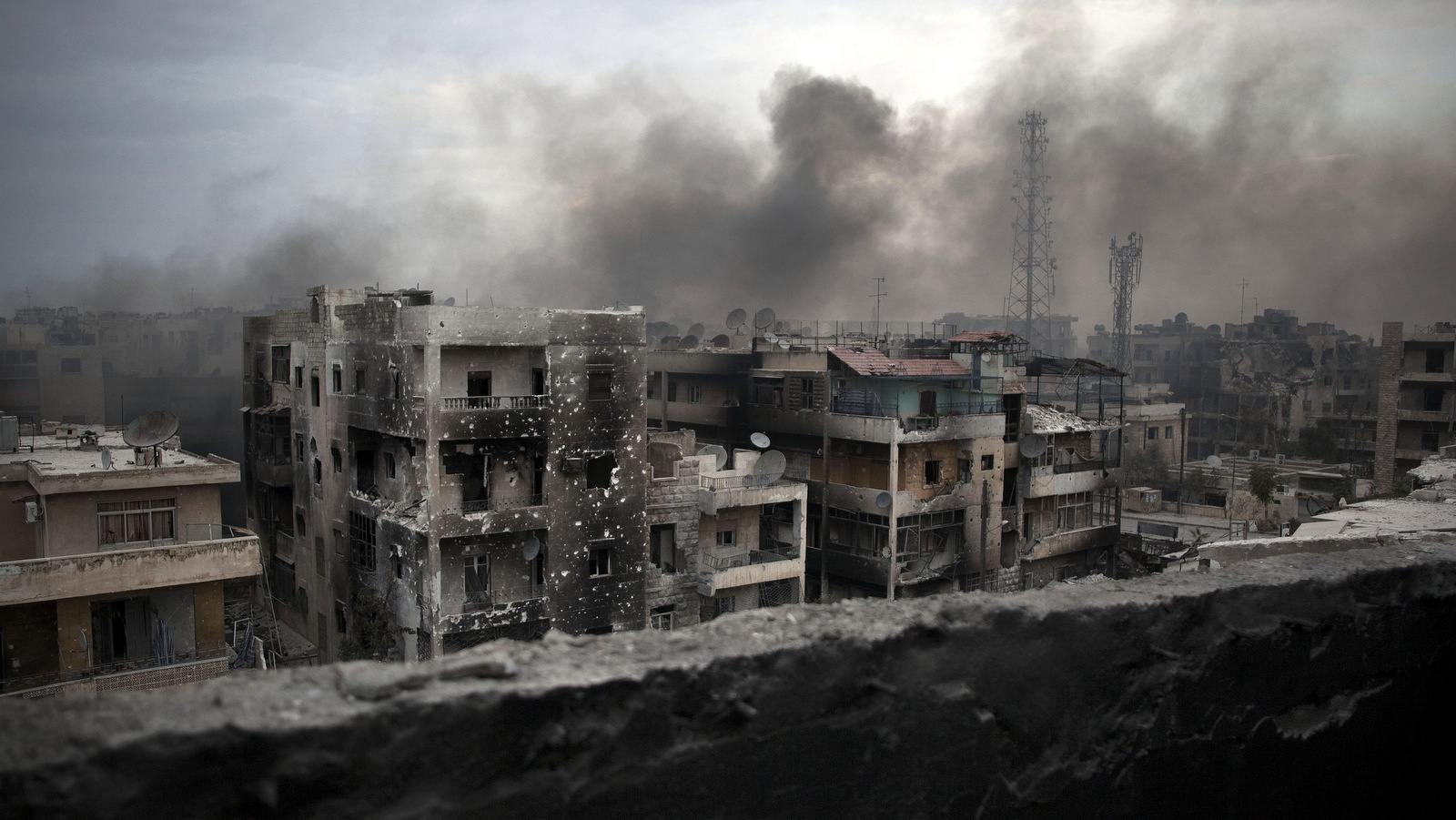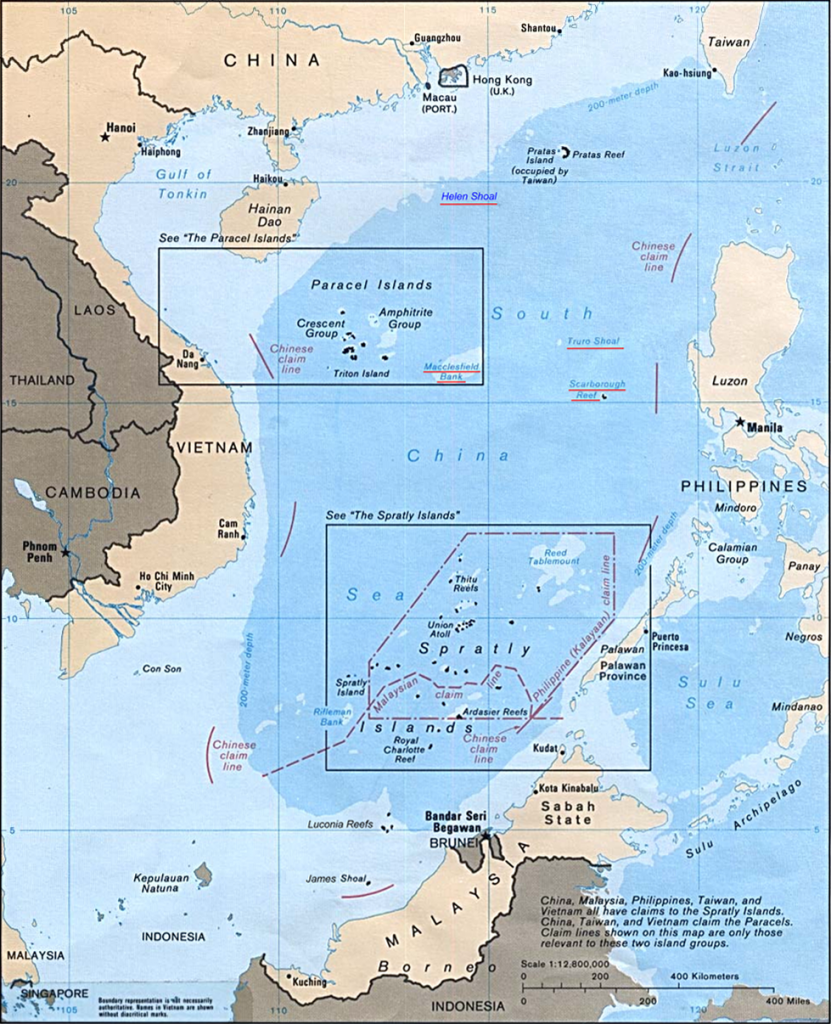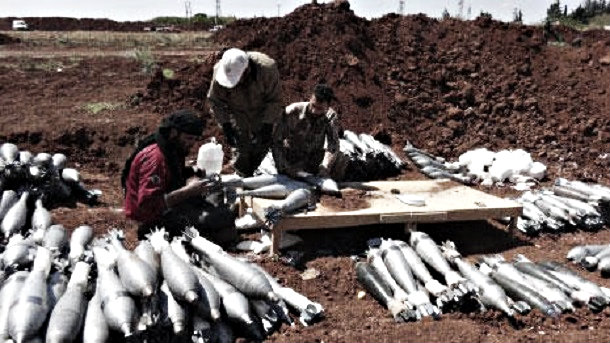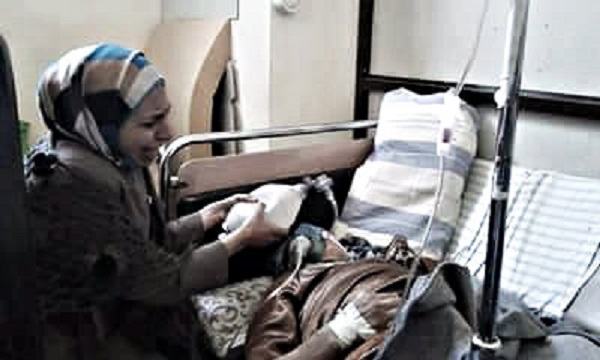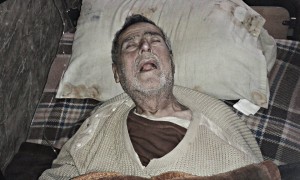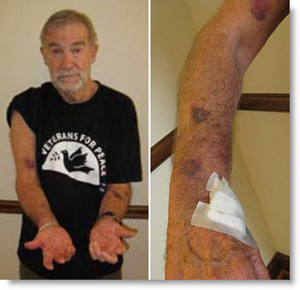The territorial dispute between Japan and Russia has its origins in the closing stages of the Second World War. Specifically, after declaring war on Japan on the evening of 8 August 1945 (two days after the atomic bombing of Hiroshima), the Soviet Union launched large-scale offensives against Japanese positions in Manchuria, Korea, and Sakhalin. Even after the broadcast of Japan’s surrender on 15 August, the Soviet advance continued. The Soviet forces recovered southern Sakhalin, which had been ceded to Japan in 1905 after Russia’s defeat in the Russo-Japanese War. They also reclaimed the islands of the Kuril chain from Urup northwards, which Russia had voluntarily transferred to Japan in the 1875 Treaty of St. Petersburg. Finally, and most controversially, between 28 August and 4 September, the Soviet military occupied the islands of Etorofu, Kunashiri, Shikotan, and the Habomai islets, territory that had never previously been Soviet or Russian.1

Map of the disputed islands (Source:CartoGIS, College of Asia and the Pacific, The Australian National University
|
Although this action can be considered the initial cause, the territorial dispute did not take on its current status as enduring stalemate until the mid-1950s. Until this time the Soviet Union and Japan remained technically in a state of war since Moscow had refused to sign the San Francisco Peace Treaty of 1951. In order to normalise this situation, and hopefully conclude a peace treaty, negotiations were undertaken in 1955-56. It was at this time that the countries came closest to finalising the status of the four islands. In the course of the discussions, the Japanese side, led by chief negotiator Matsumoto Shun’ichi and Foreign Minister Shigemitsu Mamoru, came to accept the position of considering the return of Shikotan and Habomai to be sufficient for the conclusion of a peace treaty. In other words, Japan’s diplomats were prepared to accept the loss of southern Sakhalin and all of the Kuril chain, including Etorofu and Kunashiri (Hasegawa 1998a: 109; Mizoguchi 2014). This was consistent with the San Francisco Peace Treaty in which Japan renounced “all right, title and claim to the Kurile Islands, and to that portion of Sakhalin and the islands adjacent to it over which Japan acquired sovereignty as a consequence of the Treaty of Portsmouth of September 5, 1905.” (United Nations 1952: 3).
An agreement on the transfer of Shikotan and Habomai could have provided the basis for a permanent resolution to the territorial dispute and enabled a peace treaty to be signed. During the course of the negotiations, however, the United States intervened. The State Department was particularly concerned that reconciliation between the Soviet Union and Japan would harm US interests by facilitating a broader rapprochement between Japan and the socialist bloc, including the People’s Republic of China. In addition, they were worried that any territorial concessions from the Soviet Union would increase pressure for the United States to return the Japanese territory that it continued to occupy (Hasegawa 1998a: 114-5; Mizoguchi 2014). Guided by such thinking, Secretary of State John Foster Dulles boldly declared to his Japanese counterpart that Japan had no right to grant Etorofu and Kunashiri to the Soviet Union since these islands had been renounced in the San Francisco Peace Treaty.
Moreover, if Japan were to cede this territory, the United States would demand comparable concessions and permanently annex Okinawa (Hasegawa 1998a: 124). Intimidated by this threat, the Japanese side strengthened its resolve and revived the demand for the return of Etorofu and Kunashiri as well. The Japanese authorities also altered their definition of the Kuril Islands. Having previously only considered Shikotan and Habomai to be distinct from the Kuril chain, Japan began to insist that Etorofu and Kunashiri were also part of a separate geographical entity, which later came to be called “the Northern Territories” (Hasegawa 1998a: 120).
Since the return of the two larger islands was entirely unacceptable to the Soviet side, the hardening of Japan’s position made it impossible for a peace treaty to be concluded. Instead, the governments agreed to sign a Joint Declaration in October 1956. This document formally ended the state of war, restored diplomatic ties, and cleared the way for Japan to join the United Nations. With regard to the territorial dispute, Moscow left the offer of the two smaller islands on the table. Specifically, article 9 states that
“the Union of Soviet Socialist Republics, desiring to meet the wishes of Japan and taking into consideration the interests of the Japanese State, agrees to transfer to Japan the Habomai Islands and the island of Shikotan, the actual transfer of these islands to Japan to take place after the conclusion of a Peace Treaty between the Union of Soviet Socialist Republics and Japan.” (Joint Declaration by the USSR and Japan 1956).

Signing of the Soviet-Japanese Joint Declaration by Prime Minister Hatoyama and Soviet Premier Bulganin, 19 Oct. 1956
|
There have been numerous diplomatic ups and downs over the subsequent six decades. Nonetheless, the gap that the sides ultimately failed to bridge in 1956 remains as wide as ever in 2016. That is, while Moscow considers the transfer of the two smaller islands after the signing of a peace treaty to be the maximum possible concession, Tokyo continues to insist on the restoration of sovereignty over all four.
Upon taking power, all Japanese prime ministers are expected to commit themselves to breaking this deadlock. Some have made particularly determined efforts, including Hashimoto Ryūtarō and Mori Yoshirō, while others have just paid lip service. However, irrespective of their level of commitment, none have been able to achieve a territorial resolution.
One might expect that this history of failure would discourage Japanese leaders from seriously taking on this issue. And yet, Abe Shinzō has devoted himself to resolving the territorial dispute with Russia with unusual enthusiasm. For instance, on several occasions Prime Minister Abe has repeated his commitment that “my mission as a politician, as prime minister, is to achieve this no matter what” (quoted in Naka 2014). What is more, this is not simply empty rhetoric to satisfy certain domestic constituencies. Rather, as will be seen, Abe has gone to great lengths and taken some political risks in his pursuit of closer relations with Russia. This has been a regular feature of his foreign policy during his second and third terms as prime minister and, as will be explained below, the purpose has been to lay the groundwork for achieving a territorial breakthrough before the end of his time in office. With much of this preparatory work considered complete and now in his fourth year as prime minister, all of the signs are that 2016 will be the year in which Abe redoubles his efforts and makes a final push to deliver a conclusive settlement.
In addressing this topic, this article has four main purposes. First, it provides an overview of Abe’s policy towards Russia during his second and third terms in office. Second, the paper sets out a detailed description of Abe’s apparent plan for 2016, including a review of what he will specifically offer Russia in return for a favourable outcome. Third, it presents a discussion of why Abe is especially determined to resolve this longstanding territorial problem and why he is optimistic about his chances of succeeding. And fourth, the article provides an assessment of Abe’s realistic chances of success. In this final section, emphasis is placed on how relations with Japan, and the territorial dispute in particular, are currently viewed within Russia.
Abe’s Russia Policy
Although it may have attracted less attention than some of his other diplomatic initiatives, Abe’s assiduous effort to strengthen relations with Russia has been one of the most prominent features of his foreign policy during his second spell in office. Indeed, on the very day of the 2012 election that returned him to power, Abe declared that this would be a priority of his administration (Naka 2012). True to his word, after taking office he immediately set about attempting to fulfill this ambition. The initial step was his trip to Moscow in April 2013, the first such official visit by a Japanese prime minister in over a decade. What is more, Abe has invested heavily in his relationship with President Putin, correctly discerning that the Russian leader is central to everything of importance that takes place in his country’s domestic and international politics. To this end, Abe has publicly reiterated his positive attitude towards Putin, saying “President Putin has a clear goal, to build a strong, flourishing Russia. My current goal is to build a strong Japan. In this way, the President and I share common values and ideals. I feel considerable affinity with him” (quoted in Gusman 2013). Abe has made it an explicit goal to hold “as many meetings as possible” with the Russian leader (quoted in Makarov 2014). Following through with this tactic, by early 2016 Abe had held 12 meetings with Putin. The most striking of these was Abe’s last minute decision to attend the opening ceremony of the Sochi Olympics in February 2014, an event that was boycotted by most Western leaders.

Putin and Abe meet in Sochi, February 2014
For more than a year, this attempted rapprochement progressed smoothly (Brown 2014). To begin with, the commitment to frequent one-on-one meetings appeared to have paid off as Abe was able to declare with satisfaction that “relations of personal trust and confidence have been established between President Putin and me” (Kremlin 2013). The Japanese leader was also rewarded for his decision to travel to Sochi where he received a friendly welcome from the Russian president and the two leaders moved to calling each other by their first names. More substantively, economic ties improved steadily and bilateral trade exceeded US$35bn for the first time in 2013; this represented an increase of 3.3% from 2012 (Minekonomrazvitiya 2013). In the security field too, relations reached an unprecedented level when the sides held their first “2+2” meeting in November 2013. This format, which brings together foreign and defence ministers, had previously been reserved for states with which Japan enjoys particularly close ties, specifically the United States and Australia. Further progress was also discernible in the entry into force of an agreement on the simplification of visa procedures, as well as in the formulation of plans on the exchange of cultural centres.
Most importantly for the Japanese side, this improvement in bilateral relations also appeared to be generating the intended progress on the territorial and treaty issues. At the Moscow summit in April 2013, the two leaders issued a joint statement to announce that “We have instructed our foreign ministries to step up contacts on working out mutually acceptable options [for a peace treaty]” (quoted in Clover 2013). It was later clarified that these negotiations would be conducted at the vice-ministerial level. An informal session took place in August 2013 and the following January the first round of talks began formally in Tokyo between Russia’s Deputy Foreign Minister Igor’ Morgulov and his Japanese counterpart Sugiyama Shinsuke. With the renewal of these long-stalled discussions, for the first time since 2001 there appeared to be a genuine opportunity for progress towards settling the territorial dispute.
Despite the sense of promise generated by these rapid steps forward during 2013 and early 2014, the relationship suffered a serious setback in March 2014. Following Russia’s annexation of Crimea, the United States and the European Union imposed a series of increasingly punitive economic sanctions. Japan was initially reluctant to follow suit but eventually felt it had no option but to conform to the policy of the other G7 members. Japan’s sanctions on Russia were introduced later than those of the US and EU, and they were carefully crafted to avoid having any serious impact. For instance, although a visa ban was announced against 23 individuals, Japan refused to identify who had been targeted, leading to speculation that the list did not include any prominent Russian figures (Golovnin 2014).
In this way, the Abe administration signaled its commitment to continuing the rapprochement with Russia as soon as international conditions permitted. And yet, despite the fact that Japan’s sanctions were largely symbolic, their introduction has had a chilling effect on the atmosphere in bilateral relations. Trade volumes, having reached record levels in 2013, subsequently plummeted, falling around 30% in 2015 (Zakharchenko 2015). Moreover, there has been no further “2+2” meeting and the vice-ministerial discussions on the peace treaty were suspended. Perhaps most symbolic of the contemporary difficulties, however, has been the embarrassing situation pertaining to Putin’s official visit to Japan. Abe invited the Russian president to come to Tokyo as a follow-up to the Japanese prime minister’s successful trip to Moscow in April 2013.
The visit was expected to take place in the second half of 2014, but this proved impossible due to the Ukraine crisis. Throughout 2015 there was regular talk about continuing preparations for the visit, though no date was set. Finally, when Abe and Putin met on the sidelines of the G20 in Antalya in November 2015, the plans for the visit were shelved.
Much of Abe’s hard work therefore seemed to be have been undone by the downturn in relations during the second half of 2014 and in 2015. And yet, despite these difficulties, the Japanese prime minister did not give up on rapprochement with Russia. Indeed, now that the conflict in eastern Ukraine has entered a lull, and with the possibility emerging of increased cooperation between G7 countries and Russia in confronting Islamic terrorism and North Korea’s nuclear test, there are strong signs that Abe has decided that 2016 is the year to resume efforts to secure a conclusive territorial deal with Russia.
Abe’s Plan for 2016
The diplomatic process
As previously, the centrepiece of Abe’s strategy for dealing with Russia in 2016 will be his personal engagement with the Russian leader. He made this clear in his New Year press conference of 4 January when he emphasised his intention to “keep taking opportunities to continue having dialogue with President Putin” (Kantei 2016). Abe followed up by making the relationship with Russia the major focus of a subsequent interview with the Nikkei and Financial Times. He told the journalists, “I believe appropriate dialogue with Russia, appropriate dialogue with president Putin is very important”. He also stressed his willingness to travel to Russia in 2016 and to welcome the Russian leader to Japan (Barber and Harding 2016). Although such engagement was presented as being in the interests of the G7 as a whole, there is no doubt that Prime Minister Abe is primarily concerned with achieving a territorial breakthrough.
This he confirmed on 7 February 2016, Japan’s “Day of the Northern Territories”, when he promised to quickly resolve the territorial dispute with Russia (Kommersant 2016). In particular, Abe appears confident that, in a one-on-one meeting with Putin, he can persuade the Russian leader of the merits of making a deal. Interestingly, in taking the lead himself, Abe appears to have decided to minimise the involvement of Japan’s Ministry of Foreign Affairs (MOFA). This may be a reflection of the fact that, over the years, the ministry has gained the reputation for being unhelpfully dogmatic with regard to the territorial dispute with Russia (Mori 2013: 51).
The specific summit towards which Abe is directing his hopes is likely to take place in Russia in the spring of 2016, not long before Japan hosts the G7 summit in Mie prefecture on 26-27 May. The possibility of this meeting was raised in November 2015 when the leaders met at the G20. This summit will require Abe’s third trip to Russia in a row (after April 2013 and February 2014), with no reciprocal visits from the Russian leader in between. To minimise the awkward appearance of this situation, the suggestion is that the meeting will be described as an informal summit and will not be held in the Russian capital. Initially it was rumoured that the leaders would meet in Vladivostok, Khabarovsk, or St. Petersburg (Ishimatsu and Watanabe 2016). On 16 February, however, it was reported in the Japanese media that the summit would likely take place on 6 May in Russia’s Black Sea resort of Sochi (Nikkei 2016).
Although the informal status of the spring summit is a product of circumstance, it suits the Japanese prime minister’s purposes well. This is because, unlike an official summit, there will be less preceding pressure for a concrete result and less information will have to be made public about the nature of the negotiations. This will give Abe greater freedom to concentrate on his goal of privately convincing the Russian leader to accept a territorial deal. There is precedent for such informal meetings between Japanese and Russian leaders. In particular, two “no necktie” summits were held between President Yeltsin and Prime Minister Hashimoto at Krasnoyarsk in November 1997 and Kawana in April 1998. Although ultimately leading to no breakthrough, these informal meetings were seen at the time as useful in making progress on the territorial issue. In particular, the Krasnoyarsk summit led to a pledge to conclude a peace treaty by the year 2000.
In advance of Abe’s own “no necktie” summit, the Japanese side has been eager to prepare the groundwork and to ensure the best possible atmosphere in bilateral relations. To this end, Kōmura Masahiko, Vice President of the Liberal Democratic Party (LDP), was dispatched to Moscow on 10 January. During his four-day visit, Mr Kōmura held meetings with Foreign Minister Lavrov and Sergei Naryshkin, Speaker of the Russian Duma and close Putin associate. He was also tasked with delivering a personal letter from Abe to Putin, though his hopes of meeting the Russian leader himself were not realised. Following up on Kōmura’s visit, on 22 January phone discussions were held between the Japanese prime minister and Russian president. Organised at the request of the Japanese side, these talks touched on recent developments in Korea and Syria. The leaders also took the opportunity to express their mutual interest in deepening cooperation in the political, economic, and humanitarian fields. Most interesting, however, is that official reports of the phone conversation state that, “Agreement was reached on the continuation of personal contacts” (Kremlin 2016). This suggests that plans for the informal summit were discussed. What is more, in a significant move, on the same day the Abe administration announced the appointment of a special representative to oversee relations with Russia. This new post will be assigned to Harada Chikahito, a veteran diplomat and former Japanese ambassador to Moscow (Rossiiskaya Gazeta 2016). The creation of this position represents yet further confirmation of the seriousness of Abe’s ambition to achieve a breakthrough on the territorial dispute in 2016. Mr Harada had his first opportunity to make an impact in his new role on 15 February when he met with Deputy Russian Foreign Minister Morgulov in Tokyo. At this meeting, it was agreed that Foreign Minister Lavrov would visit Japan in mid-April to confirm the final details of the informal Putin-Abe summit to take place in early May (Lenin 2016).

Russian Deputy Foreign Minister Morgulov and Japan’s special representative Harada meet in Tokyo, 15 February 2016
|
In addition to this preparatory work, the Abe administration needs to consider what it would do in the event of the successful completion of the summit. This is because, even if Abe were to secure an agreement with Putin behind closed doors, many obstacles would remain to its implementation. Above all, the Japanese side would be likely to encounter opposition from G7 members, principally the United States, who, as has been seen, has a record of intervening in this territorial dispute. In this case, the US would be concerned about a major rapprochement between Japan and Russia taking place at a time when the latter remains in possession of Crimea and continues to be controversially involved in developments in eastern Ukraine. For this reason it is helpful that the informal meeting be held in advance of the G7 summit. In this way, Japan will have the opportunity to explain its position to its Western partners and to justify the softening of its stance towards Russia. Abe attempted to do something similar at the G7 summit in Germany in June 2015 when he outlined his intention to maintain intensive dialogue with Russia, despite the continuation of sanctions (Lenin 2015). Finally, if all of these steps go well, a formal deal on resolving the territorial dispute and signing a peace treaty could be officially presented at a subsequent visit by President Putin to Japan during the second half of 2016.
The specifics of Abe’s offer
The above are likely stages of Abe’s plan to achieve a conclusive solution to the territorial problem with Russia in 2016. All of this is, however, entirely dependent on Abe’s ability to secure Putin’s agreement to a deal. What then does the Japanese leader intend to offer? This is clearly something that cannot be known with certainty. In order for such sensitive negotiations to have any chance of success, they must be conducted in private. Were the anticipated Japanese concessions to be leaked in advance in the media, the government would come under fierce attack from conservatives and it would become impossible to reach any agreement. Leaks to the press, including from within MOFA, have had this effect on the negotiations with Russia in the past (Hasegawa 1998b: 367).
Although we cannot therefore know the exact details of Japan’s negotiating position, we can nonetheless piece together its probable features. To begin with, Abe’s starting point will be an attempt to convince his Russian counterpart to recognise the legitimacy of Japan’s claims to sovereignty over all four of the islands. This hoped-for acknowledgement is prized by the Japanese side because it would validate its long-held claim that the islands are “inherent” Japanese territory and that Japan’s sovereignty was formally established by means of the 1855 Treaty of Shimoda. Not being seen to compromise on the principle of sovereignty is also valued as a way of sending a message to China and Korea that Japan will never give ground with regard to the Senkaku/Diaoyu Islands and Takeshima/Dokdo.
It is, of course, all but unthinkable that Russia would readily agree to hand over all four of the islands. After all, it is Moscow’s steadfast refusal to consider any such thing that has prevented the settlement of this dispute for over 70 years. Prime Minister Abe, however, will not demand the immediate return of the four islands. Instead, he is likely to propose a compromise whereby, if Russia recognises Japan’s residual sovereignty over the four islands, Japan will accept maximum flexibility on the timing of the islands’ actual transfer.
This proposal has already long been public (MOFA 2011), though its precise terms are less apparent. The probability is that Abe will push for the rapid transfer of Shikotan and Habomai within five to ten years. With regard to Etorofu and Kunashiri, however, Abe is likely to propose that, as long as Russia recognises Japan’s residual sovereignty, these two islands can be left to be administered by the Russian authorities. This would allow the Russian residents – approximately 8,000 on Kunashiri and 6,400 on Etorofu – to continue to live on the islands (Argumenty Nedeli 2014). Following this agreement, Japan would also reverse its opposition to its own citizens visiting the islands and would instead actively encourage economic investment and joint projects. This arrangement could be guaranteed for a period of 50 years, after which a new agreement could be made either to transfer the islands to Japanese administration or to continue with the preceding arrangement. It should be noted that this is not actually a new suggestion. It has many similarities with the proposal made by Matsumoto Shun’ichi in 1956, after he had been forced to expand Japan’s minimum requirement for a peace treaty from two islands to four (Hasegawa 1998a: 121).
Prime Minister Abe will hope to persuade President Putin of the merits of a deal that would enable Russia to retain control over the two largest islands – constituting 93% of the total landmass – albeit on condition that the islands be demilitarised. Additionally, Abe is certain to offer some more immediate incentives. The most significant of these will be economic. To start with, Abe will offer to move quickly to end the economic sanctions that Japan introduced against Russia in 2014. This promise is likely to have to remain informal as the removal of sanctions is supposed to be conditional upon Russia’s constructive contribution to resolving the Ukraine crisis. There would be opposition within other G7 countries if Japan were to be too obvious in its use of the sanctions as political leverage for pursuing its own national interests.
More important than ending its essentially symbolic sanctions, Japan will commit to providing large-scale economic assistance to be directed towards the development of Siberia and the Russian Far East. The Japanese side will wish to avoid creating the impression that it is attempting to simply purchase the islands, something that would be expected to intensify opposition from the Russian public. Nonetheless, it will be made clear that, if the territorial dispute is resolved, Japan will be willing to provide generous funding for major infrastructure and industrial projects in Russia’s eastern regions. Additionally, the prospect of lucrative long-term energy deals will be raised.
In offering these incentives, Abe will be seeking to exploit the Russian leadership’s urgent desire to develop Siberia and the Far East, something that Putin has described as the “national priority for the entire 21st century” (quoted in Zavrazhin 2013). The Japanese side will also be calculating that Russia may at present be especially willing to make sacrifices in exchange for financial assistance as a consequence of the country’s parlous economic situation. Added to this, Abe will be looking to make the most of any concerns on the Russian side about overdependence on China. In particular, as the growth engine of the Chinese economy continues to sputter at the start of 2016, there will be the hope that Russian decision makers will prioritise closer ties with other Asian partners. With regard to energy, Japan will argue that, by diversifying its customer base away from China, Russia will be able to demand higher prices in Asian markets.
The proposal for Russia to continue to administer Etorofu and Kunashiri (at least for the medium term) and the offer of economic incentives are therefore likely to constitute the central element of Abe’s plan. At the same time, however, Abe may seek to add a few further sweeteners. This could include an additional easing of visa requirements for Russian citizens to visit Japan, a reform in which Russian diplomats have recently shown strong interest (Zakharchenko 2016). More intriguingly, Abe also seems to have in mind the idea of offering Japan to serve as a diplomatic bridge between the West and Russia, thereby helping to reduce Russia’s recent isolation. It is far from clear that Washington would welcome Japan’s mediation, yet this proposal was aired during Kōmura’s January 2016 visit to Moscow. Specifically, the LDP Vice-President is reported to have told his hosts that Japan would be willing to speak up for Russia during the 2016 G7 summit and would demonstrate maximum consideration for Russia’s interests (Ishimatsu and Watanabe 2016). It is unlikely that Kōmura would have made so bold a suggestion about Japan’s conduct at the G7 summit unless directly instructed to do so by the Japanese prime minister. Subsequently, Former Prime Minister Mori, who has previously been used by Abe as an unofficial envoy to Russia, also publicly promoted the idea of the Japanese leader serving as a mediator between Russia and the West (Agafonov 2016).
By means of these incentives, Abe will hope to secure the Russian side’s recognition of the legitimacy of Japan’s claims to sovereignty over all four of the islands. If he fails in this ambition, however, what will be his fallback position? It is almost certain that Abe will have one or two further positions to which he will reluctantly retreat if his first proposal is resolutely refused. This is standard practice in negotiations. What is more, Abe will be aware of the difficulty of his task, yet, having invested so much in his personal diplomacy with Russia, he will be unwilling to come away with nothing. Abe may therefore seek to seize his chance of becoming the Japanese leader who finally ends the territorial dispute, even if this means settling for sovereignty over less than four islands.
One possible fallback option is for Japan to accept a 50-50 territorial split. This would entail Japan regaining sovereignty over Shikotan, Habomai, and Kunashiri, plus a portion of Etorofu. A new international border would be established approximately a third of the way up this last island. Such a deal would represent an equal division of landmass since Etorofu is so much larger than the other three islands. In implementing this deal, the offer of continued Russian administration over Kunashiri and the southern section of Etorofu for a fixed period of time could still apply. This would ease the process of eventual transfer to Japan. A yet further concession would be for Japan to give up its claims to Etorofu altogether and settle for sovereignty over only three islands. This would have the advantage of avoiding the creation of Japan’s first land border.
These fallback options would involve the abandonment of the Japanese government’s longstanding commitment to the principled position that Russia must simultaneously recognise Japan’s sovereignty over all four of the islands. The acceptance of either option would therefore constitute a major compromise from a Japanese leader. Despite this, it is not inconceivable that Abe would consider making such a deal. To begin with, Abe has previously demonstrated a pragmatic streak in his approach to foreign policy. This was most recently in evidence in the Japan-South Korea “Comfort Women” deal. It is well-known that Abe takes a skeptical view of the “Comfort Woman” issue. In 2007, he stated: “The fact is, there is no evidence to prove there was coercion,” (quoted in Mizoguchi and Dudden 2007: 2).
Moreover, in February 2014 the Abe administration let it be known that they were considering reviewing the apology offered in the 1993 Kōno statement (Ryall 2014). And yet, despite these personal beliefs, Abe agreed to put his name to the December 2015 “Comfort Women” deal, which included a formal expression of his own “most sincere apologies and remorse” (MOFA 2015). He did so because he evidently judged that a resolution to this dispute was in Japan’s broader national interests. As a relatively popular nationalist leader, Abe is also in a stronger position than most Japanese prime ministers to make concessions that will be unpopular with Japan’s right wing. Finally, with specific regard to the territorial dispute with Russia, it is worth noting that the idea of a 50-50 territorial split has previously been floated by Asō Tarō and Yachi Shōtarō, both prominent members of the Abe government (Mainichi Shinbun 2009; Sarkisov 2009: 45). On this basis, it is therefore not impossible to imagine Abe settling for a territorial resolution that resulted in the return to Japan of only three islands or three and one third.
Explanations for Abe’s Behaviour
Those familiar with the tortuous history of territorial negotiations between Japan and Russia will be surprised by Abe’s apparent optimism about being able to secure the return of more than the two smaller islands. In fact, some may be inclined to think that his efforts are not genuine and that he is just making a show of trying in order to garner public support. This would be a reasonable assumption, but it would not be correct.
The territorial dispute with Russia remains a priority for some small domestic groups, including the League of Chishima-Habomai Residents and certain far-right organisations. For the majority of Japanese citizens, however, this issue is not a political priority. For instance, according to a survey conducted by the Japanese Cabinet Office in 2013, only 40.5% of respondents had heard about the dispute and knew its details. A further 41% had heard about the dispute and knew its details to a certain degree. Meanwhile, only 20.6% were aware of the activities of the government and private groups to recover the islands and knew what these efforts entailed. Another 30.7% knew about these efforts to a certain extent. Strikingly, only 3.2% of respondents stated that they would be interested in actively participating in efforts to secure the return of the islands (Naikaku-fu 2013). Separate analysis also shows that public interest in the dispute with Korea over Takeshima/Dokdo now actually exceeds that in the Northern Territories (Bukh 2015: 60). On the basis of these statistics, Abe has little to gain in terms of public support by merely attempting to pursue a territorial resolution with Russia.
Additionally, if the Japanese prime minister’s activities were purely for show, he could have achieved this effect with much less effort and expenditure of political capital. Instead, as has been noted, since the beginning of his second term Abe has put extensive effort into courting Putin, even at the risk of creating some distance between Japan and the United States, something that Japanese leaders are usually loath to do. As a result, Washington has cautioned Japan about its accommodating stance towards Russia, a warning that the Japanese leader has evidently chosen to ignore (Asahi Shimbun 2015). Abe would not have engaged in such bold action if he did not believe that there was the genuine possibility of a breakthrough in the territorial dispute.
This determination to resolve the Northern Territories problem is consistent with other aspects of the prime minister’s political agenda. This is because Abe is an unusually ambitious Japanese prime minister and seems committed to sealing his legacy as a transformational leader. In this regard, he has been assisted by institutional changes since the late 1990s that have shifted power towards the prime minister’s office. He has also been encouraged by the lack of opposition since 2012, both from other parties and within the LDP (Burrett forthcoming). These developments have been empowering for the Japanese leader. The ambitious way in which he has sought to use this power, however, is specific to Abe.
Since returning to office in December 2012, Abe has hurriedly pursued a series of bold initiatives. These include the 2013 Secrecy Act, reinterpretation of the Constitution to permit collective self-defence, the economic programme dubbed “Abenomics”, and the “Comfort Women” deal with South Korea. This impatient attitude may owe something to Abe’s unexpected political rejuvenation. Having failed to leave a lasting impression during his first term as prime minister in 2006-07, Abe will be especially eager to make the most of his second opportunity in power. The Japanese leader is also in much better physical health than during his first term when he was debilitated by the effects of ulcerative colitis. Due to new medication, this illness is now under control and, according to one of his advisors, Abe is consequently enjoying “a psychological transformation that has made the prime minister more forward looking than in his first administration” (Burrett forthcoming).
These considerations may help to explain Abe’s political ambitions. There are, however, some factors that make him particularly keen to secure a peace treaty with Russia. First in this regard is his family history. It is often suggested that Abe’s determination to revise the Constitution is guided by his desire to fulfill the ambitions of his grandfather, Kishi Nobusuke, who was prime minister from 1957 to 1960. When it comes to Japan’s relations with Russia, however, it is his father who is the greater inspiration. Abe Shintarō was Japan’s foreign minister from 1982 to 1986 and was therefore in office during the positive period in Soviet-Japanese relations that followed Mikhail Gorbachev’s accession to general secretary in March 1985.
Encouraged by the optimistic atmosphere that accompanied the ending of the Cold War, Abe’s father succeeded in opening negotiations with the Soviet Union. He also developed an affection for the country and set the target of signing a peace treaty during the lifetime of the current generation. Abe Shinzō has openly expressed his determination to complete this unfulfilled goal of his father (Abe 2006: 34-7). Most nostalgically, when in Moscow in April 2013, the Japanese prime minister visited the sakura garden that had been inaugurated by his father in 1986. On that occasion, Abe stated: “In accordance with the will of my father, I wish to achieve such development in relations with Russia that the cherry trees enter a period of full bloom” (quoted in Gusman 2013).

A young Abe Shinzō with his father, Shintarō
|
Further to this emotional element, Abe’s foreign policy towards Russia is powerfully guided by his strategic vision for Japan. In this respect, the Japanese leader has two main priorities: first, to uphold Japanese security against the threat of an increasingly assertive China; and second, to return Japan to the status of a normal great power that is able to play a more independent role in international politics. Resolving the territorial dispute with Russia helps serve both goals.
To elaborate, by settling its northern border and signing a peace treaty, Japan would eliminate a major obstacle to closer relations with Russia. This would in turn open up the prospect of Japan beginning to draw Russia away from China. As is well known, in recent years the relationship between Russia and China has become increasingly close, especially in the aftermath of the Ukraine crisis and consequent deterioration in Moscow’s relations with the West (Brown 2015a; 2015b). This is undoubtedly negative for Japan since cooperation between Russia and China in the political, military, and economic spheres has an emboldening effect on Beijing. In particular, confidence about the security of its vast northeastern land border enables China to commit more resources to its maritime activities in the East and South China Seas. What is more, if regional tensions continue to grow in the coming years, Japan could find itself facing the strategic nightmare of being surrounded by a hostile Sino-Russian bloc, while simultaneously growing ever more nervous about the dependability of the security guarantee of the United States. If, on the other hand, the territorial dispute can be resolved, Japan would be in a better position to entice Moscow to distance itself from what is beginning to look like a fledgling alliance with Beijing and instead to adopt a more flexible, balancing role within East Asia.
With regard to the second goal of enabling Japan to pursue a more independent foreign policy, it is certainly not Abe’s intention to abandon the alliance with the United States. Rather, the goal is to maintain this close relationship but to make it more of a partnership of equals. That is to say, to make Japan less dependent on the security guarantee of the United States and to make it possible for Japan to act more autonomously when necessary. To achieve this, Abe wishes to revise (rather than simply reinterpret) the Constitution’s article 9, which prevents Japan from maintaining armed forces and rules out the use of force as an instrument of foreign policy. In addition, Abe is seeking to develop stronger bilateral ties with other key powers. This is why he has been so active internationally since returning to office, visiting a quarter of the world’s countries in the first 20 months (Panda 2014). There are several important relationships in this regard, but that with Russia is one of the most significant. This is highlighted in the National Security Strategy of 2013, which notes that “it is critical for Japan to advance cooperation with Russia in all areas, including security and energy, thereby enhancing bilateral relations as a whole, in order to ensure its security” (Kantei 2013: 25). Interestingly, it was the same goal of enabling Japan to operate more autonomously that informed Prime Minister Hatoyama Ichirō’s original decision to press for a territorial resolution in 1955-56. As Hasegawa explains,
“Hatoyama, noted for his stronger nationalistic tendencies, took a position that Japan should seek a more independent foreign policy, not wholly faithfully following the American global strategy. This did not mean that Hatoyama was allied with the left-wing/progressive force since he also stood for the revision of the constitution and the rearmament of Japan. In forming his cabinet, Hatoyama considered the normalization of relations with the Soviet Union the first priority of his government.” (1998a: 107-8).
The above paragraphs provide a clear explanation as to why Abe is so determined to settle the territorial dispute with Russia. They do not, however, get to the bottom of why he is so confident about his chances of success. Only the Japanese prime minister himself can provide the full reasons for this optimism, but part of the explanation would again seem to lie in Abe’s own personality. In particular, the Japanese leader appears to have a strong sense of self-belief and this encourages him to concentrate on what he wants to achieve rather than on what might ordinarily be considered possible. This conclusion is encouraged by analysis of Abe’s well-known “Japan is back” speech of February 2013 in which he stated:
The time I spent – five long years since leaving office as Prime Minister was my time for reflection. First and foremost, I reflected upon where Japan should stand in the future. I didn’t consider WHETHER Japan could do this or that. I thought, more often, what Japan MUST continue to do (MOFA 2013).
Further to the conviction that the return of the Northern Territories is something that Japan must do, Abe’s optimism is likely enhanced by a strong belief in the legitimacy of Japan’s claims to the islands. Such a view, which is common in Japan, has been subjected to criticism by some academics. For instance, according to Hasegawa, “The petulance and tenacity with which the Japanese government clung to the return of the Northern Territories can be explained by their self-righteous belief that few people in Japan have questioned – a belief that all justice rested on their side.” (Hasegawa 1998a: 141). As will be seen below, this one-sided outlook owes much to a lack of understanding of Russian perceptions of the territorial dispute. It is also reinforced by a tendency to overestimate the extent of Japanese leverage over Russia.
Last of all, Abe’s optimistic belief that he can regain sovereignty over more than just Shikotan and Habomai has actually been encouraged by the Russian side. Most significant in this regard was Putin’s statement in March 2012 when he responded to a Japanese journalist’s question by saying “we really want to permanently close this territorial problem with Japan, and we want to do so in a way that is acceptable for both countries.” Going further, Putin described this desired outcome as a “hikiwake” (meaning “draw” in Japanese) (RIA Novosti 2012). Although not attracting much interest within Russia, this comment provoked great excitement within Japan. In particular, Suzuki Muneo, a former Diet member with a long history of involvement with Russia, interpreted the statement as being of historic importance, saying
“Putin made it public that he was considering more than the return of just two islands. It was extremely brave of Putin to make such in-depth statements about the Northern Territories dispute, which has to do with national sovereignty, at a conference days before the presidential election. Putin’s affection for Japan and his determination to resolve the territorial problem also come across. It is a very sincere attitude and you feel that he has the political toughness and the good judgment of a leader. That is why, without a doubt, we have a chance with Putin.” (Suzuki 2012: 198–9).
It is not clear if Abe was as impressed by Putin’s “hikiwake” statement as his former LDP colleague. Nonetheless, it is apparent that the Japanese leader shares the belief that there is a window of opportunity at present for Japan to secure a favourable settlement to the territorial dispute.
Will Abe Succeed?
Prime Minister Abe should be applauded for his determined efforts to resolve this territorial dispute and thereby put a conclusive end to the abnormal situation in which no peace treaty exists between two of the world’s major powers. While other Japanese leaders have simply gone through the motions of demanding the islands back, Abe has carefully sought to implement a plan that he genuinely believes to have a chance of achieving a lasting resolution. In so doing, he has taken some risk. Firstly, as noted, Abe’s strategy of seeking to induce concessions by taking a soft stance towards Russia is likely to irk the United States. Secondly, having involved himself so personally in the courtship of Putin over the last three years, Abe will be seen to have failed if his endeavour leads to nothing concrete.
So, having invested significant time and political capital in the relationship with Russia, can Abe repeat his apparent success of the recent “Comfort Women” deal by pulling another foreign policy rabbit out of his hat? It is difficult to be sure of anything in international politics, especially when we cannot be certain of what is being discussed by the parties behind closed doors. Nonetheless, in the case of Abe’s attempts to secure a territorial deal with Russia in 2016, we can be as confident as possible in the prediction that his efforts will prove to be in vain.
To begin with, the territorial dispute between Japan and Russia is considerably more intractable than the “Comfort Women” issue. This is because, for all the enormous sensitivities and symbolic importance of the subject of the “Comfort Women”, it is a problem to which the resolution may involve an outcome that can clearly benefit both sides. This is much more difficult to achieve with regard to a territorial dispute. Although those who wish to encourage concessions will talk of achieving a win-win situation, the reality is that territorial disputes are essentially zero-sum. In this case, this means that for Japan to secure a satisfactory result, it is necessary for the Russian side to resign itself to the permanent loss of territory. Added to this, in the case of the “Comfort Women” agreement, the United States was able to lean heavily on Seoul to accept a seemingly unpalatable deal. By contrast, Washington has no such leverage vis-à-vis Moscow over the Northern Territories.
This being so, the only way in which Abe can succeed in securing the return of sovereignty over the four islands (or at least three) is if there are sufficiently powerful incentives for the Russian leadership to decide that there is more to be gained from voluntarily giving up the islands than from retaining them. The Japanese leader evidently believes that he can present the Russian side with such a scenario. In this regard, he is clearly mistaken. In a straightforward cost-benefit analysis, no Russian leader would rationally opt to concede to Japan any sovereignty over Etorofu or Kunashiri and there is nothing that Prime Minister Abe can realistically offer to change this. I have outlined the reasons for this in detail elsewhere (Brown 2016). The main points, however, can be summarised as follows.
Conflicting historical memory
Firstly, there is the issue of fervent opposition to any territorial transfers from within the Russian political elite and broader populace. Due to Japanese confidence about the righteousness of its own position from a legal and historical perspective, there is a tendency to overlook the alternative narrative that prevails in Russia and to underestimate the intensity of feeling that this engenders. To briefly explain these two conflicting narratives, the Japanese side regards the four islands as “inherent” Japanese territory whose legal status was firmly established by means of the 1855 Shimoda Treaty. This land was then opportunistically seized at the end of World War II when the Soviet Union, “like a thief at a fire” (Kimura 2008: 51), exploited the circumstances of Japan’s imminent defeat to forcibly occupy this territory. To make matters worse, this action was preceded by Moscow’s violation of the countries’ Neutrality Pact, making this attack a “stab in the back” (Kimura 2008: 48).
In opposition to this account, it is commonly argued in Russia that, far from being “inherent” Japanese territory, the islands were only colonised by Japan during the 19th century. What is more, this seizure of the territory by Japan is claimed to have been “accompanied by the same annihilation of local tribes that occurred in America with the Indians” (quoted in Sabov 2005). Japan is therefore considered to have no particularly strong historical or moral claim to the territory.
In terms of more modern history, within Russia it is generally believed that, rather than acting in the manner of an unprincipled looter, the Soviet Union entered the war against Japan to uphold a solemn commitment it had made to its wartime allies, the United States and United Kingdom. Having joined this conflict, Soviet forces are regarded as having made a major contribution to the defeat of Japan. This opinion was expressed by Putin in 2014 when he declared, “we did battle on the hills of Manchuria and in the mountain passes of the Greater Khingan, crushing the Kwantung Army, and together we delivered a victorious end to the Second World War” (Kremlin 2014). On this basis, the islands are considered to have become Russian territory in legitimate recompense for the Soviet contribution to Allied victory. Although the four islands had never previously been Russian territory, this outcome is nonetheless seen as legitimate since it represented well-deserved payback for four decades of Japanese aggression, which included the Russo-Japanese War, the Siberian Intervention, and the battle of Nomonhan/Khalkhin Gol. Furthermore, with regard to legal issues, the Russian side frequently draws attention to the Yalta Protocol, which states that, “The Kurile Islands shall be handed over to the Soviet Union” (Protocol of Proceedings of Crimea Conference 1945). They also highlight the San Francisco Peace Treaty in which Japan renounced “all right, title and claim to the Kurile Islands” (United Nations 1952: 48). Lastly, emphasis is placed on article 107 of the UN Charter, which Russian leaders interpret as having finalised the post-war settlement (Dolgopolov and Shestakov 2015).
The most sensitive issue from the Russian perspective, however, is the memory of the approximately 12,000 Soviet soldiers killed in the course of fighting Japanese forces during August 1945 (Zubov 2011: 181). Only 539 of these losses were incurred on the Kuril chain (during the Battle of Shumshu) and no combat took place in the occupation of the four disputed islands (Myasnikov 2014). Despite this, in the Russian popular narrative, the islands were obtained through the sacrifice of Soviet lives. This view has been repeated by Dmitrii Rogozin, Russia’s outspoken deputy prime minister, who has claimed that “the four islands became Russian territory after a bloody struggle and have now assumed the status of sacred territory” (quoted in Kimura 2008: 145).

War memorial on the island of Kunashiri
|
The Japanese authorities would fiercely challenge many elements of this account. This matters little, however, when a successful resolution for Japan is dependent on the Russian government voluntarily making concessions. What is of significance is that, in the views of a majority of Russians, any substantial transfer of territory to Japan would not be regarded as a reasonable compromise to settle a longstanding problem in bilateral relations. Instead, it would be understood as a betrayal of those Soviet soldiers who gave their lives in their country’s struggle against fascism and militarism. Such views are particularly strong in the Sakhalin region, which administers the islands. Indeed, according to one poll, 80 percent of residents would demand the president’s resignation if the islands were to be returned. More alarmingly, as many as 17.8 percent stated that they would be willing to commit extreme acts, including taking up arms, if it were necessary to protect the status of the Southern Kurils as Russian territory (Williams 2007: 189). Although these are not new statistics, such attitudes are only likely to have been strengthened by the nationalist ferment stirred up by the Ukraine crisis and by the grandiose celebrations of the 70th anniversary of the end of the Second World War. In this context, any Russian leader would have to be brave indeed to offer major territorial concessions to Japan.
Japan’s economic leverage?
Prime Minister Abe’s evident hope is that Putin can be induced to go against public opinion and to use his enormous political capital to force through a territorial deal. In formulating this strategy, however, the Japanese side has misjudged, not only the intensity of Russian popular opposition, but also the extent of Japanese leverage. As noted, the principal incentive that Abe plans to offer is Japanese economic investment in Russia, especially in Siberia and the Russian Far East. This is unquestionably something that the Russian authorities desire. And yet, if one looks more closely at the way in which this issue is seen in Russia, it immediately becomes clear that Russian enthusiasm for closer economic ties with Japan is not nearly strong enough to persuade the country’s leadership to make deeply unpopular territorial concessions.
To begin with, economic relations with Japan are not viewed as the prize they once were. Instead of being the number one Asian economy with which Russia would like to develop closer ties, as was the case during the 1990s, Japan is now considered just one of many Asia-Pacific countries with which Russia is interested in doing more business. This shift in attitude is the result of the enduring stagnation of the Japanese economy. While in 1999 Japanese gross domestic product was approximately 23 times larger than that of Russia, this had been reduced to just 2.3 times by 2013 (World Bank 2014). As a consequence, the allure of the Japanese economy has been diminished significantly and there is now a strikingly gloomy attitude within Russia towards Japan’s economic prospects. For instance, Dmitrii Strel’tsov, one of Russia’s leading Japan experts, describes the current economic situation in Japan as follows: “Against a background of prolonged recession, from which no exit is in sight, there is rooted amongst the public a sense of pessimism which borders on the feeling of a country that has capitulated after a long and exhausting war.” (2014: 78). Observations of Japan’s slow-motion population collapse only add to such negative perceptions. As such, unlike China in the 2000s to which Russia was willing to cede a small amount of territory2,Japan is not regarded as the sort of dynamic economy to which it would be worth making painful concessions in exchange for closer economic ties.
Added to this impression that Japan is economically past its best, there is a strong belief in Russia that economic leverage within the bilateral relationship is not all one way. That is, while Russia may want more of Japan’s high-tech investment, Japan also has a desire to import more energy resources from Russia. This is considered particularly pressing since Japan needs to protect its energy security by diversifying its oil and gas imports away from excessive dependence on the Middle East at a time when its nuclear power remains largely crippled (Brown 2013). Giving voice to this opinion, Valerii Golubev, Gazprom’s deputy chairman, has stated: “No, I don’t think Japan has an alternative [to Russian gas]. They don’t have their own energy resources, so they will need to buy. [. . .] For them, it is the shortest route. Therefore, in any case for them our gas will be the most advantageous” (RIA Novosti 2014). Increased economic exchange is therefore viewed as mutually beneficial, and not as some coveted gift to be bestowed on Russia by Japan in exchange for political concessions.
Another factor that seriously reduces Japanese economic leverage is the widespread understanding amongst Russian officials and business executives that the territorial dispute has already become almost completely decoupled from economic relations. In other words, attracting increased Japanese investment is not dependent on making progress on the territorial issue. This precise point is made by Viktor Ozerov, representative of Khabarovsk in the Federation Council.
“Beginning in 1994, I have been to Japan many times. At the time of my first trips, as soon as the Japanese asked, ‘Are you going to give up the islands?’ and I said, ‘No’, the negotiations immediately ended. However, during my last visit, a Japanese legislator told me that at a parliamentary level people have started to believe that economic development of our relations is a step towards resolution of the territorial problem and not the reverse.” (quoted in Sargin 2014).
On 26 January 2016, Foreign Minister Lavrov confirmed that this was also his understanding of the situation, stating:
“Some Japanese politicians say that if the peace treaty is concluded and the territorial issue resolved, Japanese business will become hugely involved in the Russian economy but it will play it safe if it doesn’t happen. We don’t feel that Japanese business is trying to play it safe. … For the most part, business is not waiting for any political stamp but is actively working” (Russian Ministry of Foreign Affairs 2016).
Based on observations like these, there is the not unreasonable belief in Russia that, if the authorities succeed in creating a more attractive environment for all investors, Japanese investment will also substantially increase, even if there is no progress whatsoever on the territorial dispute. Efforts in this direction are already underway, including the goal to reach 20th place in the World Bank’s ease of doing business rankings by 2018 (Kremlin 2012), as well as the creation of the Vladivostok Free Port and several Territories of Priority Development in the Russian Far East (Markelov 2015).
Last of all, any Japanese financial inducements have to be weighed against the economic losses associated with surrendering sovereignty over the islands. This is an issue emphasised by Svetlana Goryacheva, a Duma deputy, who declares: “Of course, I would never give up the Southern Kurils! … these islands are especially rich in fish and mineral resources. That is, the Japanese have something to gain and we have something to lose. There are really valuable natural resources there!” (quoted in Sargin 2014). Added to the forfeiture of these natural assets, by transferring the territory to Japan the Russian government would be abandoning a number of its own recent investments. The islands were seriously neglected during the 1990s, resulting in much hardship for their resident population. Since the mid-2000s, however, the Russian federal and regional authorities have directed significant financial resources to the islands, including programmes of R30bn for 2007-15 and R20bn for 2016-25 (Interfax 2014). These funds have been directed towards building and renewing basic infrastructure on the disputed islands, including roads, power plants, and water treatment facilities. Most eye-catchingly, a new airport was opened on Etorofu in 2014 and a new hospital was unveiled on Shikotan in 2015. With a touch of hyperbole, one Russian newspaper proclaimed that “the islands are being transformed from a godforsaken frontier to a downright paradisiacal corner of Russia” (Argumenty Nedeli 2014). Now that this “paradise” is on its way to completion, the Russian government will surely be all the more reluctant to give it up.

New Russian airport on Etorofu
|
Russian security considerations
The final set of reasons that ensure that Abe will not succeed in his plan to resolve the territorial dispute in 2016 relate to Russia’s national security considerations. Firstly in this regard, the Russian military will oppose any transfer of sovereignty over the islands because of its desire to retain tight control over the Sea of Okhotsk. This is because of the Sea’s potential strategic value as a “last line of defense” (Haines 2014: 596). Specifically, in the event of a major conflict, Russia would have the option of mining the narrow straits that provide access to the Sea of Okhotsk and using the area as a sanctuary for its ballistic missile submarines. This contingency plan gives Russia added confidence about the security of its nuclear deterrent. Giving up Etorofu and Kunashiri would undermine this strategy as two of the most convenient channels for accessing the Sea are adjacent to the islands. It might be thought that such strategic planning for a nuclear confrontation was a relic of the Cold War. In fact, however, in recent times Moscow has come to place increasing emphasis on its nuclear arsenal in recognition of the fact that, unlike the Soviet Union, Russia’s conventional forces are no match for those of the United States and its allies.

The Sea of Okhotsk, Russia’s “last line of defense”
|
In addition to functioning as a side-door to the Sea of Okhotsk, the disputed islands are considered strategically important to Russia because of their location at the extreme end of the Northern Sea Route. The Russian government is eager to promote the commercial use of this alternative trade route between Europe and Asia. At the same time, however, the authorities are worried about the security implications of the Arctic waterways in proximity to Russia’s northern coastline becoming increasingly accessible as a result of climate change. It is to a considerable extent in response to these security concerns that Russia has recently sought to accelerate its programme of developing a total of 392 military installations on Etorofu and Kunashiri. As announced in January by Defence Minister Shoigu, all of this military infrastructure is now expected to be complete by the end of 2016 (Sankei Shinbun 2016).
There is therefore well-established opposition on security grounds to the transfer of the islands to Japan. While long-standing, this hostility has intensified in the aftermath of the Ukraine crisis. In particular, Japan’s decision to follow the United States in introducing sanctions has encouraged the view in Russia that Tokyo simply functions as Washington’s puppet when it comes to major international issues and that it cannot be trusted to act in an autonomous fashion. This view underpins the comments made by Foreign Minister Lavrov during his 26 January press conference when he expressed Russia’s desire to “see a more independent Japan”. He also made the criticism that “When a country takes the same position as the United States, it doesn’t contribute much to the political process or adjust the balance in the drafting of decisions.” (Russian Ministry of Foreign Affairs 2016). Given these current attitudes, the prospect of a territorial transfer becomes even more distant since it would be regarded by many Russians as being, at least partly, a political concession to the United States. Whether justified or not, there is also the underlying fear that, if it regained the islands, Japan would permit the US to use the territory to deploy military, surveillance, or missile-defence capabilities in proximity to Russia’s eastern borders.
Lastly in terms of security, in recent times an increasingly salient feature of Russian foreign policy has been the Kremlin’s portrayal of itself in the role of defender of all Russian speakers and “compatriots” (sootechestvenniki), even if these individuals are not Russian citizens and are resident outside the borders of the Russian Federation. This concept has been present within Russian foreign policy thinking for some years, but it became particularly prominent following the Ukraine crisis when Moscow appealed to this idea in justifying the annexation of Crimea. As such, having fully embraced this role of protector of all Russians internationally, it is all but inconceivable that Putin would now agree to a territorial deal that would be seen by many in his country as the abandonment of nearly 17,000 Russians to be ruled by a foreign power.
Conclusion
In short, however strong his determination, how well-planned his negotiating strategy, and how friendly his personal relations with Putin, Prime Minister Abe will be unable to secure any deal in 2016 that entails Japan regaining the islands of Etorofu and Kunashiri, even if this were only in terms of a recognition of residual sovereignty. The only territory that could possibly be recovered is Shikotan and Habomai, in accordance with the 1956 Joint Declaration. As I have previously argued in this journal (Brown 2015c), there is growing opposition within Russia to even this concession. Nonetheless, as signalled by Lavrov’s reference to this agreement on 26 January (Russian Ministry of Foreign Affairs 2016), the Putin administration (at least for the time being) seems willing to honour this commitment. This is therefore most likely what Putin had in mind when raising the possibility of a “hikiwake” solution3.
The prospect of recovering only these two islands, which account for 7% of the total disputed landmass, will be unacceptable to most on the Japanese side. Arguing against such a resolution, there will be those who counsel that, even if a more favourable deal is impossible at present, Japan should remain patient and wait until its negotiating position further strengthens. This argument has been made previously by Kimura Hiroshi, who believes that “the international situation and the Russian domestic situation are moving in a direction favourable to Japan and therefore Japan should wait until the right opportunity, which will come in 2017 or later” (Kawauchi 2014). Such optimism is based on positive assessments of Japan’s economic and security position vis-à-vis Russia, but it is also encouraged by the assumption that a peace treaty is something “which Russia badly needs” (Kimura 2009: 29). Once again, this assessment derives from a serious misunderstanding of the Russian position.
Fundamentally, the Russian authorities feel little compulsion to sign a peace treaty with Japan. Such a document would be welcome as a way of ending the awkward legal situation that exists between the two countries, yet the Russian side sees no particular urgency to finalise such a treaty and is certainly not inclined to make concessions to achieve it. The reason is because, while there may not be a peace treaty, this does not mean that the countries are in a state of war. Instead, the Joint Declaration of 1956 formally established “peace, friendship and good-neighbourly relations” (Joint Declaration by the USSR and Japan 1956). As such, Russian officials frequently emphasise their broad satisfaction with the status quo. Most recently, this point was reiterated by Foreign Minister Lavrov who, on 26 January, told the press that “essentially we maintain peace and cooperation. In other words, we don’t feel the effects of the absence of the peace treaty” (Russian Ministry of Foreign Affairs 2016).
The Russian side is therefore in no hurry to reach a resolution to the peace treaty and related territorial issue. This tendency is further strengthened by the perception that time is on Russia’s side. Firstly, it will not be long before the last of the Japanese former residents of the islands passes away. This will deprive Japan of some of its most ardent campaigners for the islands’ return and will also break Japan’s most direct connection to its former territory. Furthermore, as the years pass, we begin to approach the date of 2035 when the islands shift to having been ruled directly for longer by Moscow than they ever were by Japan. Lastly, and perhaps most importantly, the demographic situation is not favorable to Japan. The Russian population of the islands has recently been growing at a rate of 2-3% a year (Argumenty Nedeli 2014), and the Russian government has introduced plans to attract further residents (Japan Times 2015). At the same time, Japan’s population will continue to decline. Specifically, by 2055 it is projected that Japan’s population will have plummeted to 91.93 million from 128.06 million in 2010 (National Institute of Population and Social Security Research 2012: 13). With this population decline affecting remote areas most strongly, this suggests that, even if the islands were somehow returned, Japan would be unable to repopulate them.
In conclusion, with the passage of time, Japan’s chances of regaining any territory become ever less and Russia’s position will become increasingly inflexible. This trend is reflected in Deputy Foreign Minister Morgulov’s statement of September 2015, in which he said, “We are not engaging in any form of dialogue with Japan on the ‘Kuril problem’. This question was solved 70 years ago” (Interfax 2015). A similarly hardline stance was also shown by Lavrov when he stated, “We do not consider the peace treaty to be synonymous with resolving the territorial issue” (Russian Ministry of Foreign Affairs 2016). This being so, if Abe is really committed to resolving the territorial dispute with Russia before the end of his time in office, he will need to consider settling for considerably less than a 50-50 territorial split or three islands. If not, Japan’s prospects of regaining any territory whatsoever are likely to soon vanish altogether.
Works cited
- Abe, S. (2006) Utsukushii kuni he [Towards a Beautiful Country] (Tokyo: Bungei Shunju).
- Agafonov, K. (2016) Sindzo Abe mog by stat’ sosrednikom mezhdu Rossiei i Zapadom, schitaet eks-prem’er Yaponii [Abe Shinzō could become a mediator between Russia and the West says former prime minister of Japan], TASS, January 26.
- Argumenty Nedeli (2014) Na Kurilakh uzhe nikto ne khochet v Yaponiyu [On the Kurils already no-one wants the islands to go to Japan], 43(435), November 13.
- Asahi Shimbun (2015) Japan pursues top-level talks with Russia despite U.S. concern, May 23.
- Barber, L. and Harding, R. (2016). Japan’s Abe calls for Putin to be brought in from the cold, Financial Times, January 17.
- Brown, J.D.J. (2013) The 2011 Great East Japan Earthquake and Russian-Japanese Relations, Post-Soviet Affairs, 29(3): 197-236 (June).
- Brown, J.D.J. (2014). Hajime! The causes and prospects of the new start in Russian-Japanese relations, Asia Policy, 18: 81-110 (July).
- Brown, J.D.J. (2015a). Ukraine and the Russia-China Axis, The Diplomat, April 2, http://thediplomat.com/2015/04/ukraine-and-the-russia-china-axis/
- Brown, J.D.J. (2015b). Towards an anti-Japanese territorial front? Russia and the Senkaku/ Diaoyu dispute, Europe-Asia Studies, 67(6): 893-915 (August).
- Brown, J.D.J. (2015c). Not Even Two? New developments in the territorial dispute between Russia and Japan, The Asia-Pacific Journal, 13(38-3) (September).
- Brown, J.D.J. (2016) Japan, Russia and their Territorial Dispute: The Northern Delusion (Oxon: Routledge).
- Bukh, A. (2015) Shimane Prefecture, Tokyo and the territorial dispute over Dokdo/Takeshima: regional and national identities in Japan, The Pacific Review, 28(1): 47-70.
- Burrett, T. (forthcoming) Abe road: Comparing Japanese Prime Minister Shinzo Abe’s leadership of his first and second governments, Parliamentary Affairs.
- Clover, C. (2013). Russia and Japan Revive Talks over Disputed Islands, Financial Times, April 29.
- Dolgopolov, N. and Shestakov, E. (2015) Minskie zagovorennosti: Sergey Lavrov o tom, kto i zachem iskazhaet Minskie dogovorennosti [Minsk enchantments: Sergey Lavrov about who and what distorts the Minsk agreements], Rossiiskaya Gazeta, May 19.
- Golovnin, V. (2014) Yaponiya ob” yavila o novykh sanktsiyakh v otnoshenii Rossii [Japan announces new sanctions in relation to Russia], ITAR-TASS, April 29.
- Gusman, M. (2013). Sakura nepremenno zatsvetet [The Sakura will bloom without fail], Rossiiskaya Gazeta, April 26.
- Haines, J.R. (2014) ‘Ali Baba’s cave’: The sea of Okhotsk’s contentious triangle , Orbis, 58(4): 584–603.
- Hasegawa, T. (1998a). The Northern Territories Dispute and Russo-Japanese Relations: Volume 1 – Between War and Peace, 1697-1985 (Berkeley: University of California Press).
- Hasegawa, T. (1998b). The Northern Territories Dispute and Russo-Japanese Relations: Volume 2 – Neither War, Nor Peace, 1985–1998 (Berkeley: University of California Press).
- Interfax (2014) Sakhalinskaya oblast’ vlozhit v razvitie Yuzhnykh Kuril 20 milliardov rublei [Sakhalin Oblast invests 20 billion in development of Southern Kurils], September 1.
- Interfax (2015) V MID RF otkazalis’ vesti peregovory s Yaponiei po povodu Kuril [Russian Foreign Ministry refuses to hold negotiations with Japan regarding the Kurils].
- Ishimatsu, H. and Watanabe, T. (2016). Hoppōryōdo, itoguchi saguru sokkin gaikō [Northern Territories: Inner circle diplomacy in search for starting point], Asahi Shinbun, January 14.
- Japan Times (2015) Russia calls for immigration to islands disputed with Japan, August 14.
- Joint Declaration by the USSR and Japan (1956), The World and Japan Database Project, Institute of Oriental Culture, University of Tokyo, ioc.utokyo.ac.jp/~worldjpn/documents/texts/docs/19561019.D1E.html
- Kantei (2013) National Security Strategy, provisional translation, December 17, kantei.go.jp/foreign/96_abe/documents/2013/__icsFiles/afieldfile/2013/12/17/NSS.pdf
- Kantei (2016). New Year’s Press Conference by Prime Minister Shinzo Abe, January 4, http://japan.kantei.go.jp/97_abe/statement/201601/1215413_10999.html
- Kawauchi, Akiko (2014). Nichi ro kan no ryōdo kōshō [Territorial negotiations between Japan and Russia], National Diet Library, Reference, 3: 101–121.
- Kimura, H. (2008) The Kurillian Knot: A History of Japanese-Russian Border Negotiations (Stanford: Stanford University Press).
- Kimura, Hiroshi (2009) The Northern Territories issue: Japanese-Russian relations and domestic concerns in Japan, ch. 2 in Hara, K. and Jukes, G. (eds.) Northern Territories, Asia-Pacific Regional Conflicts and the Åland Experience (Abingdon: Routledge).
- Kommersant (2016) Sindzo Abe poobeshchal skoro uladit’ territorial’nye spory s Rossiei [Abe Shinzō promises to quickly settle the territorial dispute with Russia], February 7.
- Kremlin (2012) Ukaz Prezidenta Rossiiskoi Federatsii: O dolgosrochnoi gosudarstvennoi ekonomicheskoi politike [Decree of the President of the Russian Federation: Regarding long-term state economic policy], decree no. 596, May 7, http://graph.document.kremlin.ru/page.aspx?1610833
- Kremlin (2013) Zayavleniya dlya pressy i otvety na voprosy zhurnalistov po itogam Rossiisko-Yaponskikh peregovorov [Statements for the Press and Replies to Journalists’ Questions about the Results of Russian-Japanese Negotiations], April 29, http://news.kremlin.ru/transcripts/18000
- Kremlin (2014) 75-letie pobedy na Khalkhin-Gole [75th anniversary of the victory at Khakhin Gol, September 3, kremlin.ru/news/46553
- Kremlin (2016). Telefonnyi razgovor s Prem’er-ministrom Yaponii Sindzo Abe [Telephone conversation with Prime Minister of Japan Abe Shinzō], January 22, http://kremlin.ru/events/president/news/51193.
- Lenin, A. (2015). G7 otneslas’ s ponimaniem k zhelaniyu Yaponii prodolzhat’ dialog s RF [G7 reacts with understanding to Japan’s desire to continue dialogue with Russia], Rossiiskaya Gazeta, June 9.
- Lenin, A. (2016) MID RF: Sergei Lavrov posetit Yaponiyu v seredine aprelya [Russian MFA: Sergei Lavrov will visit Japan in mid-April], February 15.
- Mainichi Shinbun (2009). ‘3.5 jima’ henkan [The return of ‘3.5 islands’], April 18.
- Makarov, Y. (2014) Prem’er-ministr Yaponii khotel by uskorit’ peregovory o territorial’noi problemy RF [The Japanese Prime Minister would like to accelerate negotiations about the territorial problem with Russia], ITAR-TASS, January 19.
- Markelov, R. (2015) Zakon o TORakh vstupil v silu [Law on Territories of Priority Development enters into force], Rossiiskaya Gazeta, March 30.
- Minekonomrazvitiya (2013) Zvaimovygodnoe sotrudnichestvo Rossii i Yaponii [Mutually beneficial cooperation between Russia and Japan,” December 26, http://economy.gov.ru/minec/press/news/doc20131226_3
- Mizoguchi, K. and Dudden, A. (2007). Abe’s Violent Denial: Japan’s Prime Minister and the ‘Comfort Women’, The Asia-Pacific Journal: Japan Focus, 5(3): 1-4.
- Mizoguchi, S. (2014) Nisso kokkō seijō-ka kōshō ni taisuru Beikoku no seisaku no henka to renzoku-sei [Changes and continuities in US policy towards the Japan-Soviet normalisation talks], Kokusai Seiji, 176: 111-125.
- MOFA (1993). Statement by the Chief Cabinet Secretary Yohei Kono
- on the result of the study on the issue of “comfort women”, August 4, http://www.mofa.go.jp/policy/women/fund/state9308.html
- MOFA (2011). Northern Territories Issue. March 1, http://www.mofa.go.jp/region/europe/russia/territory/overview.html
- MOFA (2013). Japan is Back, February 22, http://www.mofa.go.jp/announce/pm/abe/us_20130222en.html
- MOFA (2015). Announcement by Foreign Ministers of Japan and the Republic of Korea at the Joint Press Occasion, December 28, http://www.mofa.go.jp/a_o/na/kr/page4e_000364.html
- Momoi, Y. (2016) Putin’s ‘draw’ not so even, Nikkei Asian Review, January 15.
- Mori, Y. (2013) Nihon seiji no ura no ura [Deep behind the scenes of Japanese politics], (Tokyo: Kōdansha).
- Myasnikov, V. (2014) Na Shumshu za yaponskimi tankami [On Shumshu beyond Japanese tanks], Nezavisimaya Gazeta, September 12.
- Naka, K. (2012). Budushchii prem’yer Yaponii Abe nameren ukreplyat’ otnosheniya s Rossiei [Future Premier of Japan Abe Intends to Strengthen Relations with Russia], RIA Novosti, December 16.
- Naka, K. (201 4). Yaponskii prem’er ser’ezno nameren podpisat’ mirnyi dogovor s Rossiei [Japanese prime minister seriously intends to sign a peace treaty with Russia], RIA Novosti, December 1.
- Naikaku-fu (2013) Hoppōryōdo mondai ni kansuru tokubetsu seron chōsa [Special public opinion survey on the Northern Territories problem], http://survey.gov-online.go.jp/tokubetu/h25/h25-hoppou_chosahyo.pdf
- National Institute of Population and Social Security Research (2012). Population Projections for Japan (January 2012): 2011 to 2060, ipss.go.jp/site-ad/index_english/esuikei/ppfj2012.pdf
- Nikkei (2016) Shushō go gatsu jōjun hōro de chōsei, sochi jiku ni: ryōdo kōshō no shinten mezasu [Prime Minister’s visit to Russia set for early May in Sochi: Progress targeted in territorial negotiations], February 16.
- Panda, A. (2014) Shinzo Abe Has Visited a Quarter of the World’s Countries in 20 Months: Why?, The Diplomat, September 11.
- Protocol of Proceedings of Crimea Conference (1945), February 11, The Avalon Project, http://avalon.law.yale.edu/wwii/yalta.asp
- RIA Novosti (2012) Putin shchitaet vozmozhnym reshit’ territorial’nuyu problemu s Yaponiei [Putin Considers it Possible to Resolve the Territorial Problem with Japan], March 2.
- RIA Novosti (2014) Realizatsiya proekta ‘Vladivostok SPG’ zavisit ot sprosa v Yaponii [Realisation of the project ‘Vladivostok LNG’ depends on Japanese demand], October 24.
- Rossiiskaya Gazeta (2016). V Yaponii uchrezhden post spetspredstavitelya po otnosheniyam s Rossiei [New post of special representative for relations with Russia established in Japan], January 22.
- Russian Ministry of Foreign Affairs (2016) Sergey Lavrov’s remarks and answers to media questions at a news conference on Russia’s diplomacy performance in 2015, Moscow, January 26, http://www.mid.ru/en/foreign_policy/news/-/asset_publisher/cKNonkJE02Bw/content/id/2032328
- Ryall, J. (2014) Japan may revise ‘comfort women’ apology, Deutsche Welle, February 25.
- Sabov, A. (2005) Za Kurily. Istoriya ostrovov preduprezhdaet: Peregovory o ‘severnykh territoriyakh’ opasny dlya zdorov’ya natsii [For the Kurils. The history of the islands is a warning: Negotiations about the ‘Northern Territories’ is a danger to the health of the nation], Rossiiskaya Gazeta, October 28.
- Sankei Shinbun (2016) Hoppōryōdo no Ro-gun shisetsu ‘nennai ni subete kansei o’ to shiji, Roshia kokubōsō [Russian Defence Ministry: Russian military installations on the Northern Territories ‘all to be completed within the year’], January 12.
- Sargin, A. (2014) ‘Yapontsy nervnichayut, – tak eto u nikh takaya emotsiaonal’naya reaktsiya’ [‘The Japanese are nervous, that’s why they have such an emotional reaction’], Argumenty-Live, September 26.
- Sarkisov, K. (2009) The territorial dispute between Japan and Russia: The ‘two island solution’ and Putin’s last years as President, ch. 3 in Hara, K. and Jukes, G. (eds.) Northern Territories, Asia-Pacific Regional Conflicts and the Åland Experience (Oxon: Routledge).
- Strel’tsov, D. (2014) Ekonomicheskaya politika yaponskogo pravitel’stva S. Abe [The economic policies of the Japanese government of S. Abe], Vostochnaya Analitika, 4: 78– 86.
- Suzuki, Muneo (2012) Seiji no Shuraba [Political Carnage] (Tokyo: Bungei Shunjū).
- United Nations (1952) Treaty of Peace with Japan, United Nations – Treaty Series, no.1832.
- Weitz, R. (2008) Russia, China end decades-long border dispute, World Politics Review, August 1.
- Williams, B. (2007) Resolving the Russo-Japanese Territorial Dispute: Hokkaido-Sakhalin Relations (Oxon: Routledge).
- World Bank (2014) “Data: GDP (current US$),” http://data.worldbank.org/indicator/NY.GDP.MKTP.CD
- Zakharchenko, I. (2015) Posol: Moskva ozhidaet padeniya tovarooborota s Tokio na 30% v etom godu [Ambassador: Moscow expects a fall in trade turnover with Tokyo of 30% this year], RIA Novosti, December 22.
- Zakharchenko, I. (2016) Prem’er Yaponii otstaivaet neobkhodimost’ provedeniya sammita s Rossiei [Japanese premier upholds the necessity of conducting a summit with Russia], January 04.
- Zavrazhin, K. (2013) Poslanie prezidenta RF Vladimira Putina Federal’nomu Sobraniyu [Message from President of the Russian Federation Vladimir Putin to the Federal Assembly], December 13.
- Zubov, A.B. (2011) Istoriya Rossii XX Vek, 1939–2007 [History of Russia of the 20th Century, 1939–2007] (Moscow: Astrel’).
Notes
1For convenience, the Japanese names for the islands will be used in this article. In Russian, the islands are known as Iturup, Kunashir, Shikotan, and the Habomai. Also for simplicity, the Habomai islets will be referred to as a single island.
2In 2004 Russia agreed to settle its border dispute with China by relinquishing sovereignty over one and a half islands at the confluence of the Amur and Ussuri Rivers. In contrast to the territorial dispute with Japan, the amount of land involved was small and almost entirely unpopulated (Weitz 2008).
3There is an alternative interpretation of Putin intentions, which is even more depressing from a Japanese perspective. According to this view, Putin is not even willing to consider recognising Japanese sovereignty over Shikotan and Habomai. Instead, by exploiting the wording of the 1956 Joint Declaration, Russia would offer to “transfer” the two smaller islands to Japan for that country’s use. Sovereignty, however, would remain with Russia (Momoi 2016).









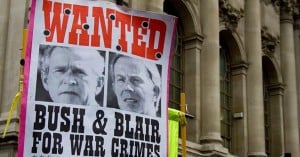

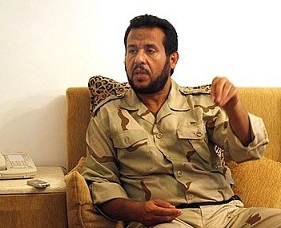 Many Americans and other followers of this story may still be unaware that, Abdel Hakim-Belhadj (photo, left), the
Many Americans and other followers of this story may still be unaware that, Abdel Hakim-Belhadj (photo, left), the 



